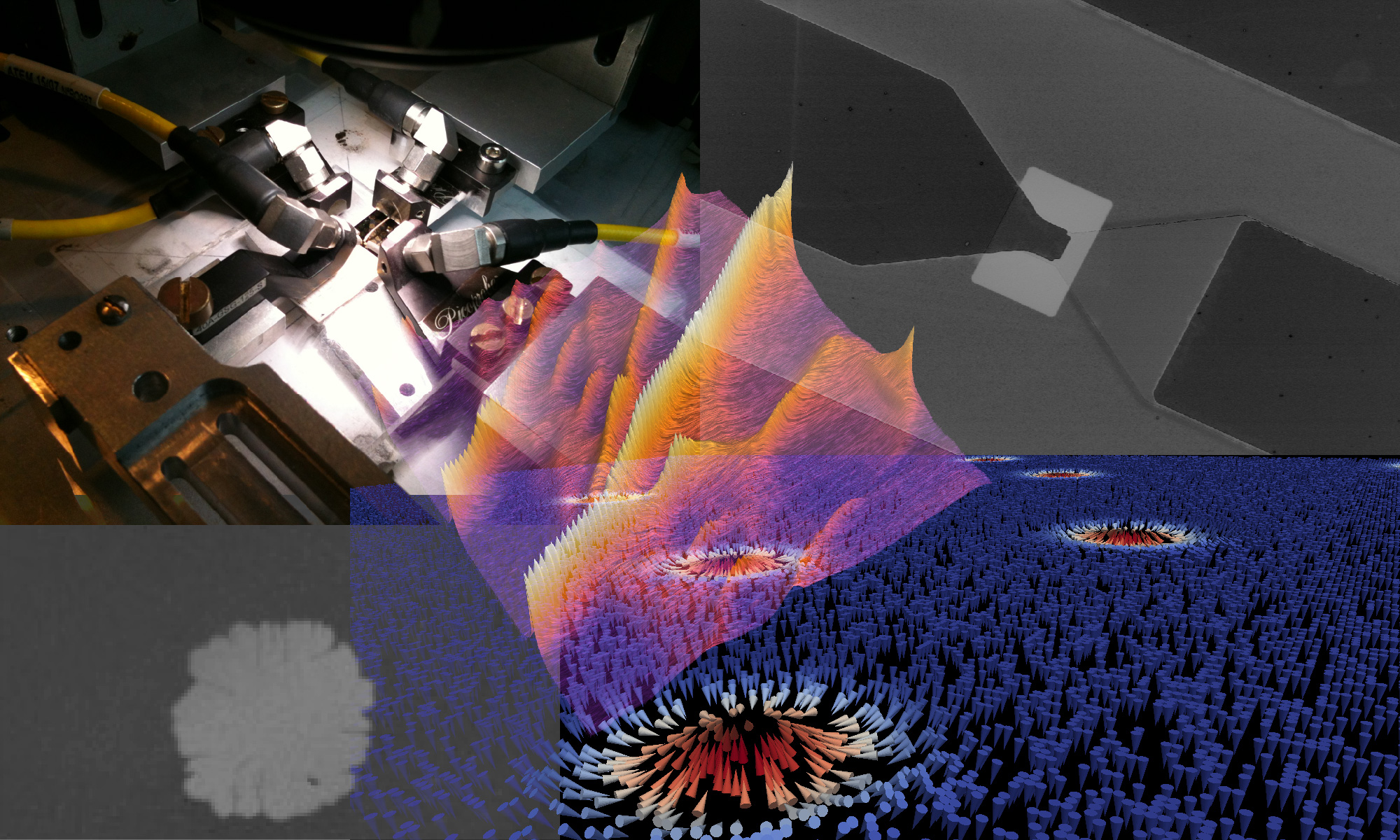This position is offered by the Center for Nanoscience and Nanotechnology (C2N) near Paris. It will be supervised by Sylvia Matzen (group: Oxides Integrated in Devices) and Thibaut Devolder (Novel Magnetic Devices group) and will be situated in the multidisciplinary research project CHIRON. The CHIRON project, funded by the European Commission (H2020-FETOPEN) and involving 9 partners, targets at groundbreaking research in spin wave computing and started in May 2018 and shall last till April 2021. A project overview can be found after the job description.
Candidate profile: PhD degree in physics, material science or engineering, experimental experience in nanofabrication, electrical characterizations, magnetism and/or piezoelectricity, interest in rf devices. Excellent communication skills for interaction with project scientific partners and with clean room engineers, spoken and written English. Ability to supervise master students.
JOB DESCRIPTION
The Post-Doc will design, fabricate and characterize and magnetoelectric (ME) spin wave (SW) transducers in tight interaction with EU and local partners. ME transducers consist of coupled piezoelectric and magnetostrictive layers. The oscillating strain generated in the piezoelectric layer by an external RF excitation changes the magnetic anisotropy in the magnetostrictive material periodically and thus generates SWs. These SWs can propagate in a waveguide fabricated out of the same magnetostrictive material or can be transferred to a waveguide by exchange or dipole interactions. Taking advantage of mechanical resonances can enhance the coupling between electric and spin domains.
The post-doc researcher will develop micrometer and sub-micrometer sized transducers based on inductive antenna, surface acoustical wave delay lines as well as magnetic/mechanical nanoresonators. He/she will fabricate and electrically characterize such devices at RF frequencies and develop advanced spinwave waveguides for high frequency operation in inverters and majority gates. The key performance indicators for these logic gates will be evaluated including area, throughput/delay, power, noise margin, as well as the magnitude of the output signal.
The recruited post-doc will deposit magnetostrictive materials that he/she will characterize mainly by permittivity measurements and ferromagnetic resonance. He/she will then pattern the films in systems comprising waveguides and transducers optimized for short wavelength SWs. The efficiency of the SWs transducers will be measured mainly by microwave electrical methods using dedicated probe stations. The post-doc will finally conduct advanced modeling, both using analytical formalisms and numerical methods (micromagnetics, multiphysics)
The post-doc will benefit from the C2N expertise in spintronics, ferroelectricity, film growth, nanodevices fabrication and high frequency characterization, up to simple MEMS design, in addition to the related theories. Collaborations with CHIRON partners (already well established) will broaden the post-doc experience through interactions and visits. Promising preliminary results have already been obtained, and in view of the groundbreaking nature of the targeted research, there will be opportunities for the Post-Doc to strengthen his/her research track record with high-impact publications.
Contact: Thibaut Devolder, (thibaut.devolder /AT/ u-psud.fr) and Sylvia Matzen, (sylvia.matzen /AT/ u-psud.fr)
Starting: April 2020.
Duration: 12 months.
Keywords: ferromagnetism, piezoelectricity, spin wave, computing, radiofrequency, transducers.
CHIRON project:
The future miniaturisation of electronic circuits following Moore’s law will require the introduction of increasingly disruptive technologies to limit power consumption, optimise performance per circuit area, and reduce cost. CHIRON envisions spin wave computing to complement and eventually replace CMOS in future microelectronics.
Spin wave (SW) computing is a paradigm-shifting technology that uses the interference of spin waves for computation. Spin wave computing has the potential for significant power and area reduction per computing throughput while reducing cost by alleviating lithography requirements. As a first step towards the vision of a full spin wave computer, CHIRON envisions hybrid spin wave–CMOS circuits that can be readily integrated alongside CMOS.
CHIRON targets a ground-breaking proof of principle of the essential elements for hybrid spin wave–CMOS computing by an interdisciplinary approach joining partners with expertise in materials science, physics, manufacturing, electrical engineering, device simulation, and circuit design. CHIRON will fabricate basic logic gates, such as inverters and majority gates, demonstrate their operation, and assess their performance. As transducers between CMOS and spin wave domains in hybrid circuits, CHIRON will develop magnetoelectric and multiferroic nanoresonators, based on nanoscale bulk acoustic resonators, which bear promise for high energy efficiency and large output signal. The targeted lateral scale (100 nm) and resonance frequency (>10 GHz) bring such resonators to the frontier of nano-electromechanical systems (NEMS).
This technological proof of principle is complemented by the design of digital hybrid spin wave–CMOS circuits that possess the advantages of spin wave computing and can be integrated into a CMOS environment. Based on calibrated compact device models, the performance of these circuits in terms of power, area, throughput, and cost will be benchmarked against CMOS to demonstrate their viability.
